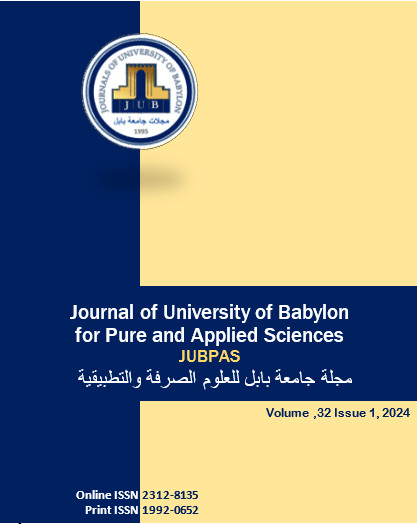Studying Potential Energy Surface for 190Hg 188Pt and 186Os Isotones Using Approximation Model
Main Article Content
Abstract
Background:
The interacting boson model was introduced in 1974 as an attempt to represent the collective features of nuclei in a coherent approach. This model is the fundamental model for explaining nuclear properties. The Bohr and Mottelson collective model was developed from this model to represent quantum mechanical collective motion such as rotations or which called SU(3) and vibrations motion and called U(5).
Materials and Methods:
The surface potential energy of the isotones 190Hg, 188Pt and 186Os was studied using the Interacting Boson Model Potential program (IBMP), which gives an idea of the deformation that occurs in the nucleus from the deflection of the contour lines and their aggregation in a specific region.
Results:
By applying the Hamiltonian for our isotones in this research, the energy levels were be investigated for ground band, beta band and gamma band, comparing with available experimental data then from the results, draw the potential energy surface and study the deformations that occur in the nuclei of these isotones.
Conclusions :
Determining the limit of these isotones, which have the properties of the limit. These isotones contain some deformation specially 190Hg and 186Os, but there isn’t in 188Pt. This model is good for studying the isotones properties with high even-even atomic number.
Article Details

This work is licensed under a Creative Commons Attribution 4.0 International License.
